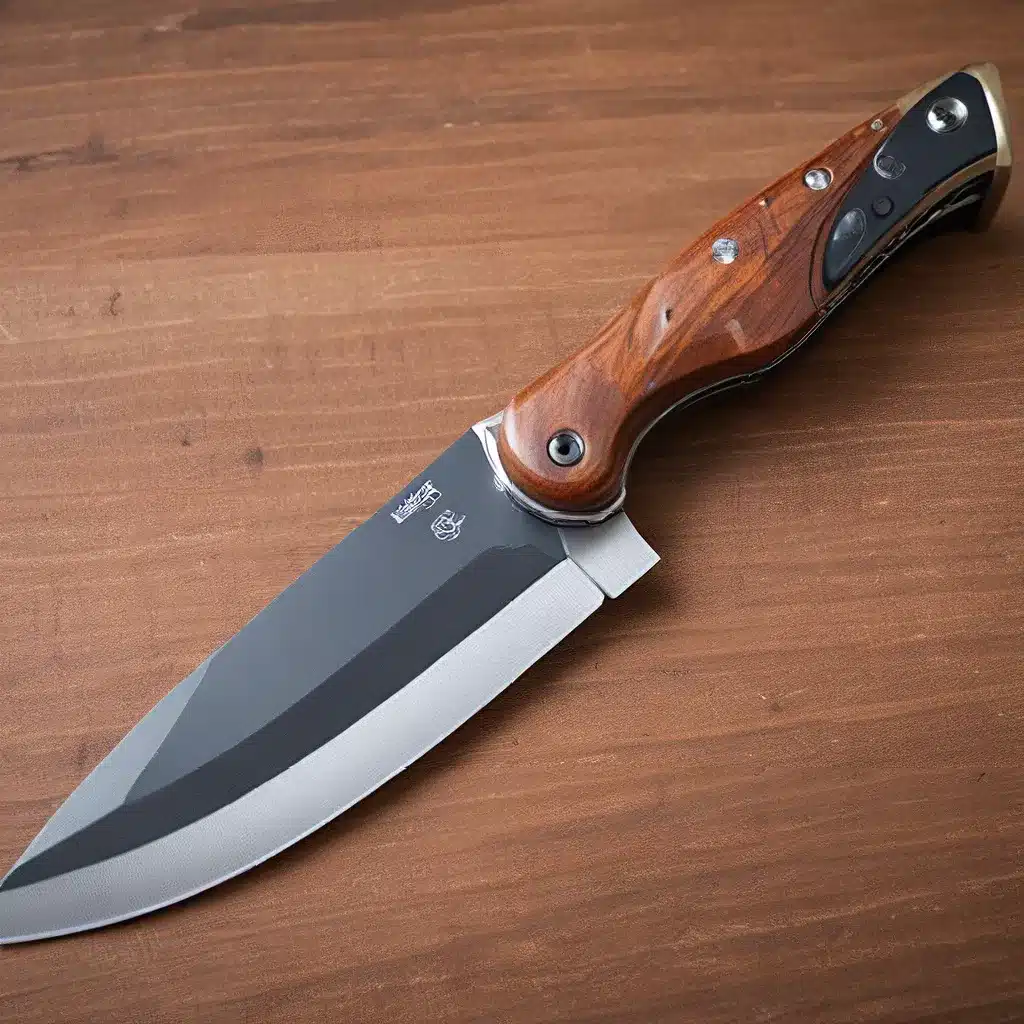
Ah, the humble knife – a kitchen essential that we often take for granted. But let me tell you, my friends, there’s more to these trusty tools than meets the eye. In this comprehensive guide, I’m going to walk you through the intricate anatomy of a knife, revealing the hidden secrets that make each part so darn important.
The Tip: Precision at its Finest
Let’s start with the business end of the knife, the tip. This is the portion of the blade closest to the point, and it’s where you’ll find the real precision-cutting power. Whether you’re delicately slicing tomatoes or carefully trimming the fat off a steak, the tip is your go-to for all those fiddly, intricate tasks.
But the tip isn’t just about precision; it’s also about control. The sharp, tapered design allows you to navigate tight spaces with ease, making it the perfect tool for tasks that require a deft touch. Think about peeling an apple or carving a garnish – the tip is your secret weapon for getting those jobs done with finesse.
Oneida puts it best: “When curved, this portion of the blade is called the belly or curve.” And let me tell you, that little bit of extra curve can make all the difference when you’re trying to glide through soft, delicate ingredients.
The Heel: Brute Force Meets Finesse
Now, let’s talk about the heel – the section of the blade closest to the handle. This is where the real power lies, folks. If the tip is all about precision, the heel is all about brute force.
Think about it this way: when you need to chop through tough veggies or break down a whole chicken, you’re going to want to rely on the heel. This part of the blade is designed to handle the heavy-duty stuff, providing the muscle and leverage you need to get the job done.
But don’t let that burly reputation fool you. The heel is a multitasker extraordinaire. While it’s great for those tough-guy tasks, it also has a delicate side. Blade Mag describes the heel as “the section of the blade closest to the handle that’s used for more forceful cutting.”
So whether you’re slicing through a dense squash or deftly trimming the fat off a pork chop, the heel has got your back. It’s the yin and yang of the knife world – brute force and finesse, all in one handy package.
The Spine: The Backbone of the Blade
Now, let’s shift our focus to the spine – the top of the blade that’s not sharp. This might seem like the least exciting part of the knife, but trust me, it’s a crucial component.
Sharp Edge Shop explains that the spine is “thicker to add weight and strength to the overall knife design.” In other words, this part of the blade is the backbone that gives your knife the heft and stability it needs to tackle even the toughest tasks.
Think about it this way: when you’re slicing through a dense root vegetable or carving a roast, you need a knife that’s not going to flex or bend under pressure. That’s where the spine comes in. It’s the sturdy foundation that keeps your blade steady and your cuts clean.
But the spine isn’t just about brute strength. It also plays a role in the overall balance and feel of the knife. A well-designed spine can make a blade feel effortless in your hand, allowing you to glide through ingredients with precision and control.
So, the next time you pick up a knife, take a moment to appreciate the unsung hero that is the spine. It may not be the flashiest part of the blade, but it’s the foundation that keeps your culinary adventures running smoothly.
Bringing It All Together: The Versatility of Knives
Now that we’ve explored the individual parts of a knife, let’s take a step back and appreciate the big picture. These tools are truly the Swiss Army knives of the kitchen, capable of handling a wide range of tasks with ease.
Think about it – you’ve got the precision of the tip, the power of the heel, and the stability of the spine, all working together to create a kitchen workhorse that can tackle just about any job you throw at it. Whether you’re slicing paper-thin tomatoes, dicing onions, or carving a turkey, a well-designed knife is the key to making it all look effortless.
And let’s not forget the versatility factor. Different knives are designed for different purposes, and Herman Knives has a wide selection to choose from. From the classic chef’s knife to the specialized paring knife, each tool is engineered to excel at its intended task.
So, the next time you find yourself in the kitchen, take a moment to appreciate the engineering marvel that is your trusty knife. Understand the unique role that each part plays, and you’ll be well on your way to becoming a culinary pro. Who knows, you might even impress your friends with your newfound knife knowledge!
Of course, the journey of knife mastery is never truly complete. There’s always more to learn, more techniques to explore, and more delicious creations to bring to life. But with this solid foundation of knife anatomy, you’re well on your way to unlocking the full potential of these incredible tools.
So, what are you waiting for? Grab your knife, and let’s get slicing, dicing, and mincing our way to culinary greatness!


